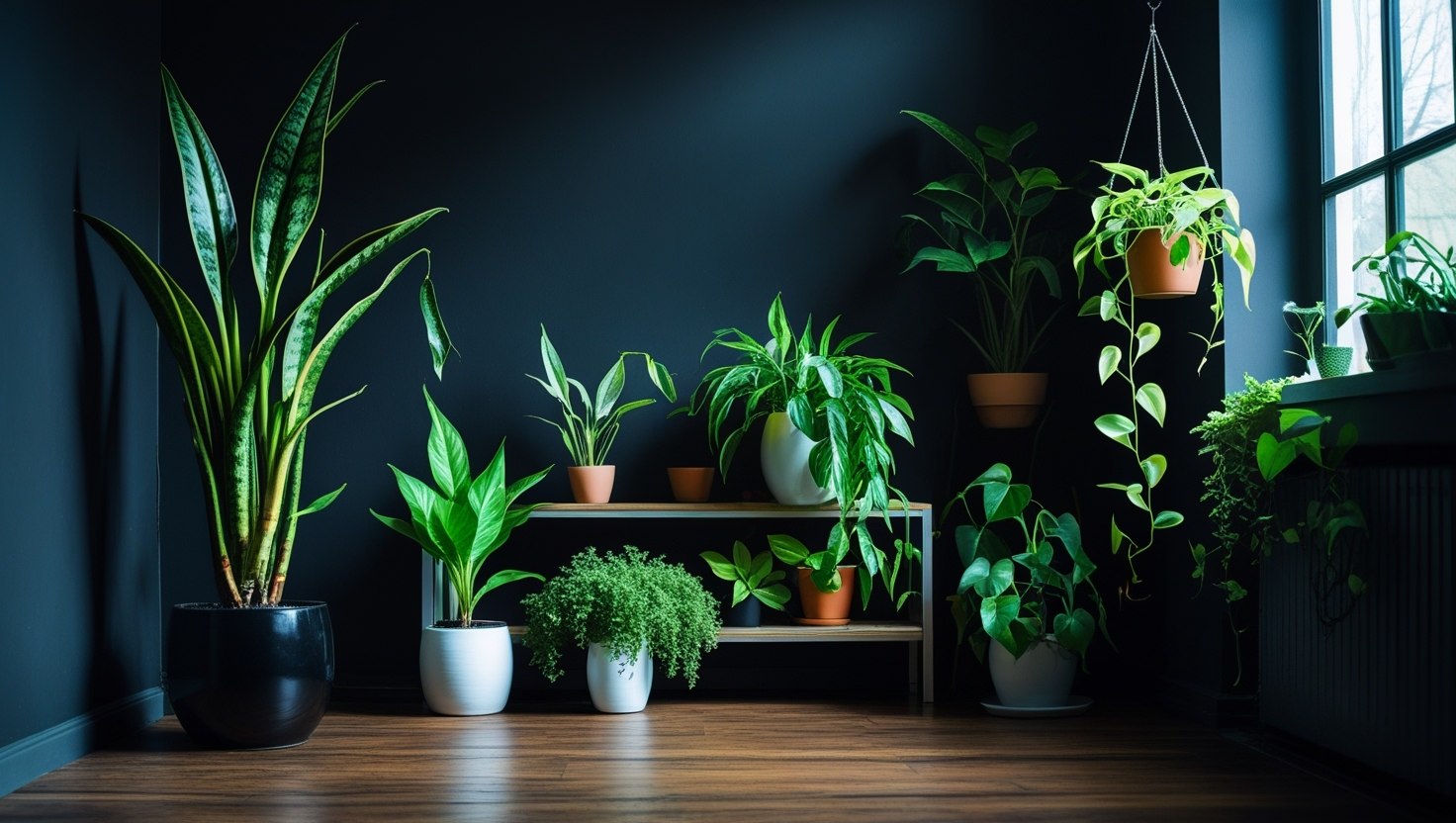
10 Best Low-Light Indoor Plants for Dark Spaces
Everyone’s got that dark space in their home that they don’t know what to do with. Do you want a lamp? A chair? Or some captivating artwork? But wait. What if we were to put a houseplant there? Oh, the transformation it would bring! But you say it’ll die. There’s not enough light. Today, my friends, we’re diving into the world of Low-Light Indoor plants that thrive in dark spaces. Yes, you heard it right. We’re shedding some light on the top five green heroes that can conquer even the darkest corners of your home. So grab your flashlights and let’s illuminate these botanical wonders.
How Low-Light Indoor Plants Thrive in the Dark
Low-light indoor plants are nature’s superheroes. They adapt, survive, and even flourish where others fail. Here’s how they do it—and how you can care for them to bring life to your shadowy spaces.
1. Snake Plant: The MacGyver of the Plant World
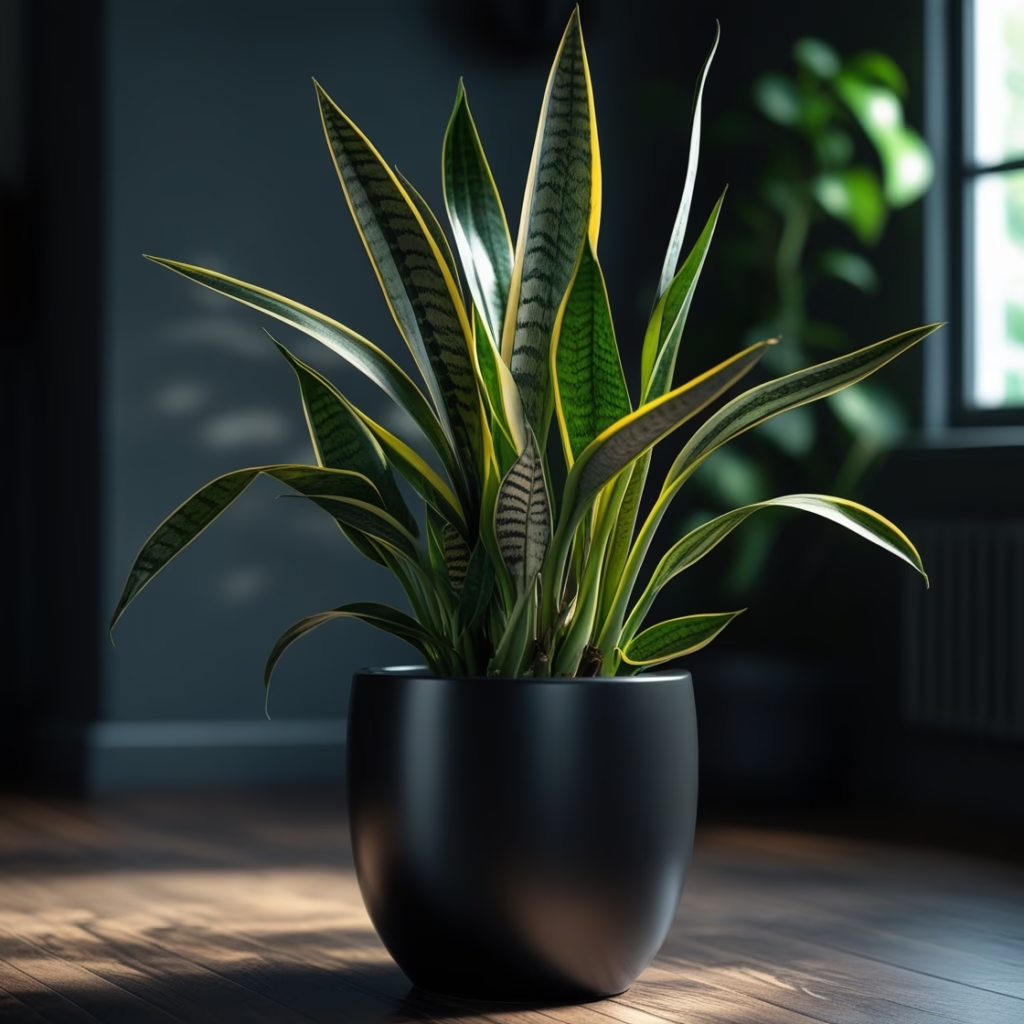
First up on our list of dark space champions is a snake plant. Whereas I like to call it the MacGyver of the Plant World, this superhero can handle anything you throw at it. Low light? Neglect? You name it. Sword-shaped leaves not only bring a touch of elegance to any space, but there are so many to choose from that you’ll surely find one you’ll love. Plus, it’s practically indestructible. So even if you forget about it for a while, it’ll forgive you and keep on thriving.
Hey, I’m sorry. So here’s one tip I want you to remember when you get one. To water it correctly, just give it a soak. A good bottom water will do. Then wait for the soil to dry out 100% before watering again. If you choose a bear irrigated variety—and this goes for all plants—they’ll tend to lose the variegation the longer they live in the dark.
2. ZZ Plant: The James Bond of Greenery
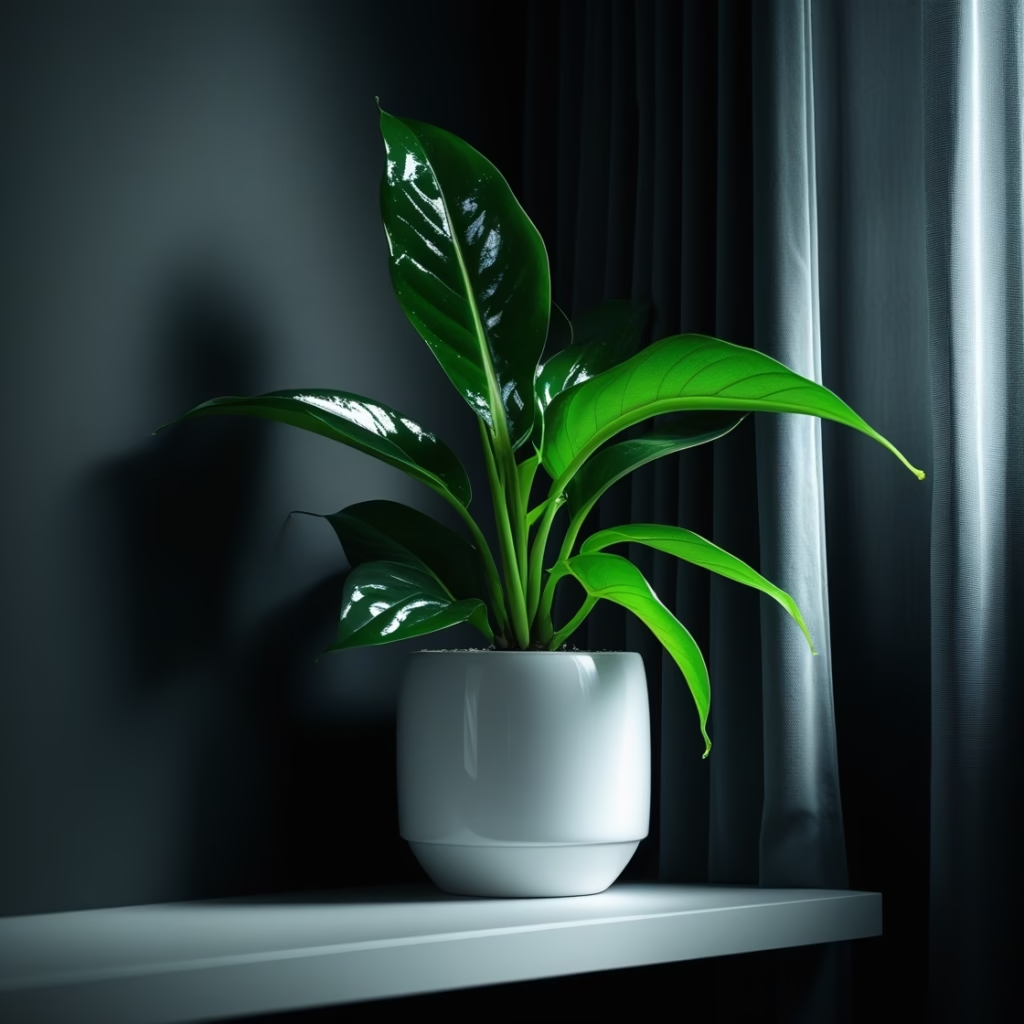
Now let’s unveil the hero that embraces the darkness with style: the one and only ZZ plant. Picture this: a plant with glossy green leaves so vibrant they seem to emit their subtle glow. The ZZ plant is like the James Bond of the plant world, effortlessly navigating through a wide range of light conditions—from low to bright indirect light. It can handle it all with finesse.
So whether you’re a seasoned plant parent or just starting your plant journey, easy plants offer a unique combination of beauty and adaptability that not many plants can match. The secret to its success lies in the ability to store water within its thick rhizomes, allowing it to survive droughts with charm and poise. So, my friends, water sparingly and let the soil dry out between waterings. Beautiful and easy to care for—what more could you ask for?
3. Pothos: The Low-Light Conqueror
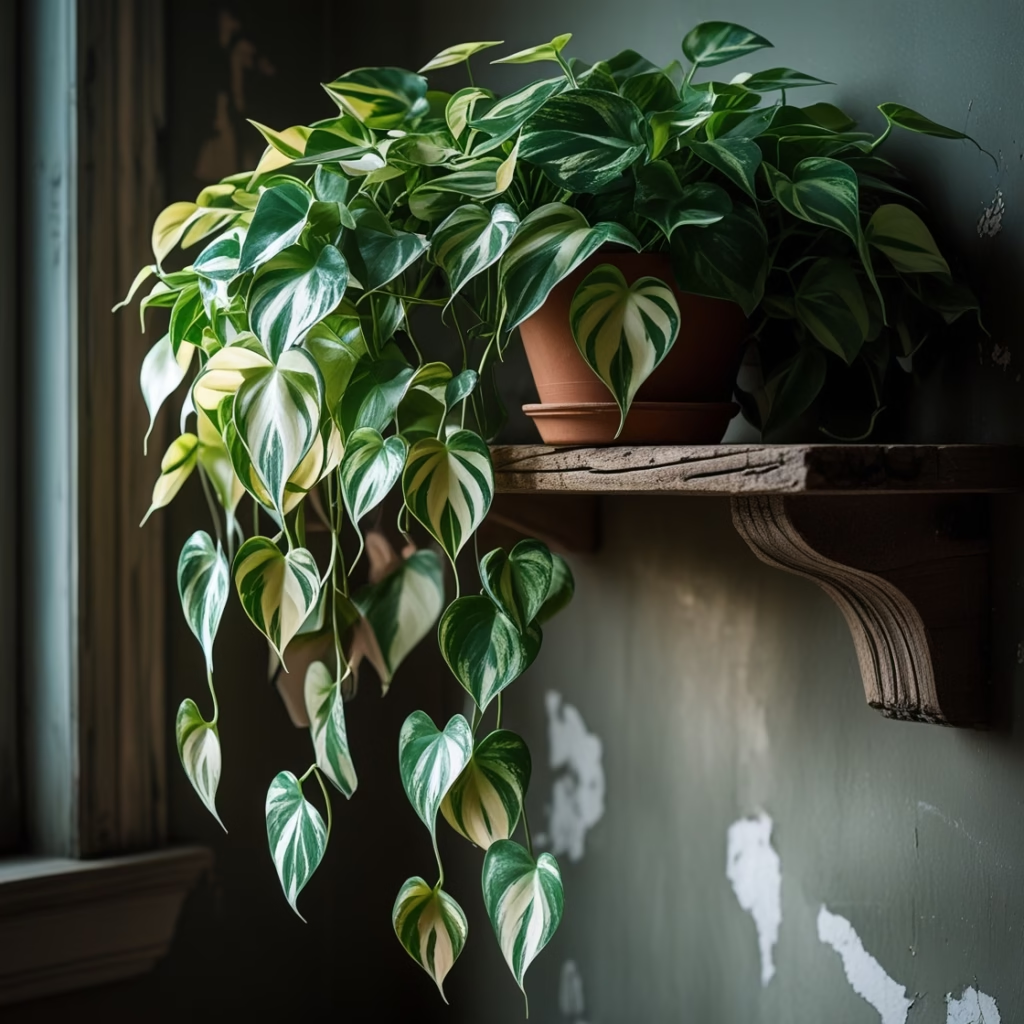
And now the pothos, also known as the low-light conqueror and the master of climbing. If you’re looking to add some drama to your dark spaces, this trailing beauty will take your breath away. Its heart-shaped leaves dangle gracefully, and it can climb walls, shelves, and even into your dreams. Hey, that’s creepy! The pothos is a true performer when it comes to surviving in low light. Its ability to photosynthesize efficiently under dim conditions makes it a fantastic addition to any dark corner.
Also, keep in mind—and this goes for most plants—when placed in the dark (and by dark I mean low light, not no light), they’ll grow slower. Leggier, if that’s a word. The leaves will grow smaller, and as I said before, the variegated varieties will lose variegation over time. But that’s the trade-off we get for putting them in a dark spot. Who told you to move into a haunted mansion? Not me! These plants have a craving for moisture. Don’t overwater them. Keep their soil slightly moist but never soggy. Remember, a splash of water when the top inch of soil feels dry will keep your pothos happy and thriving. And here’s a little secret: pothos are excellent to propagate. Snip a vine, place it in water, and witness the miracle of new roots taking hold.
4. Peace Lily: The Diva of Darkness
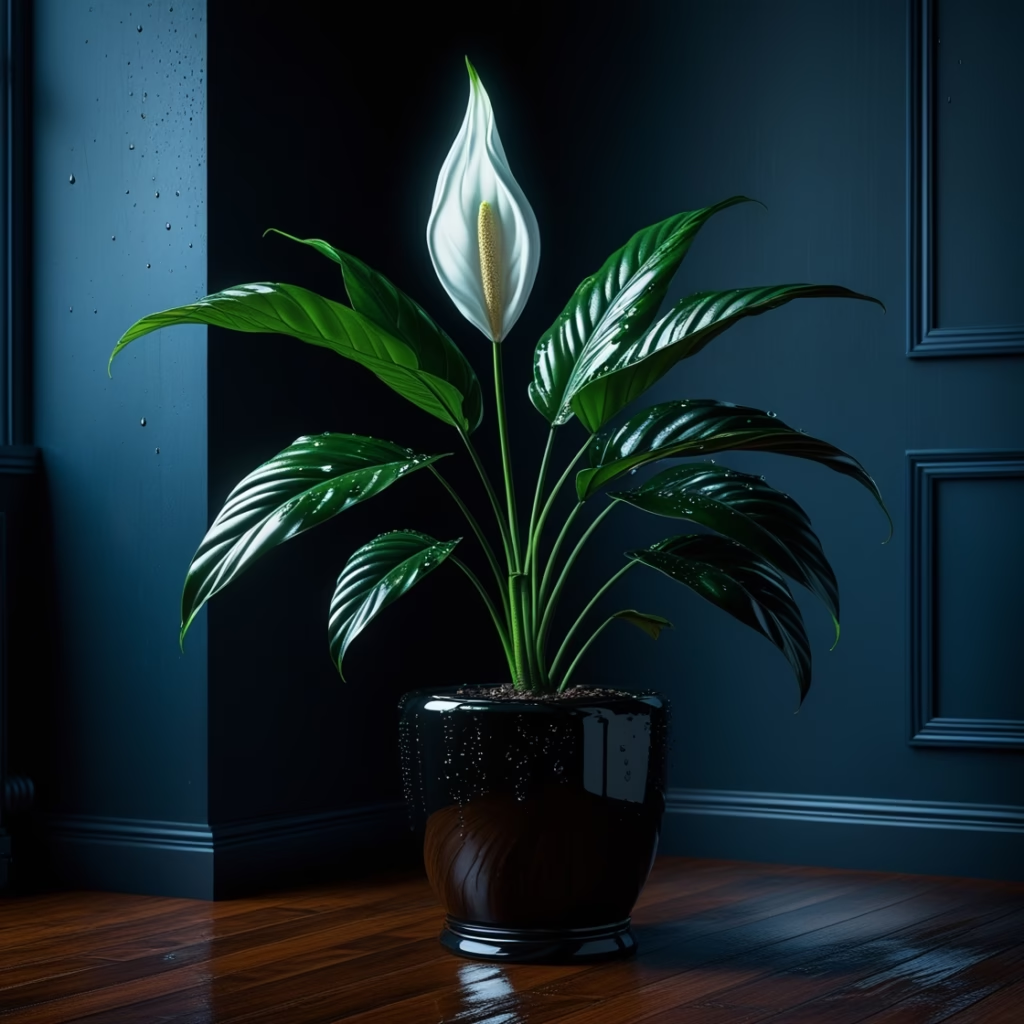
Now let’s talk about a real show-stopper: the peace lily. Whereas I like to call it the diva of darkness, with its glossy green leaves, this plant will steal the spotlight in any dark room. One trick with this plant is just to make sure to not overwater it. Soggy soil can lead to root rot. And here’s another secret, my friends: when it comes to watering, the peace lily has a subtle way of communicating its watering needs. When it starts to droop a little, it’s telling you it’s thirsty. So water it generously and then allow the top one to two inches of soil to dry out between waterings. Now watch this divine specimen flourish in your dark sanctuary.
5. Heartleaf Philodendron: The Romantic Hero
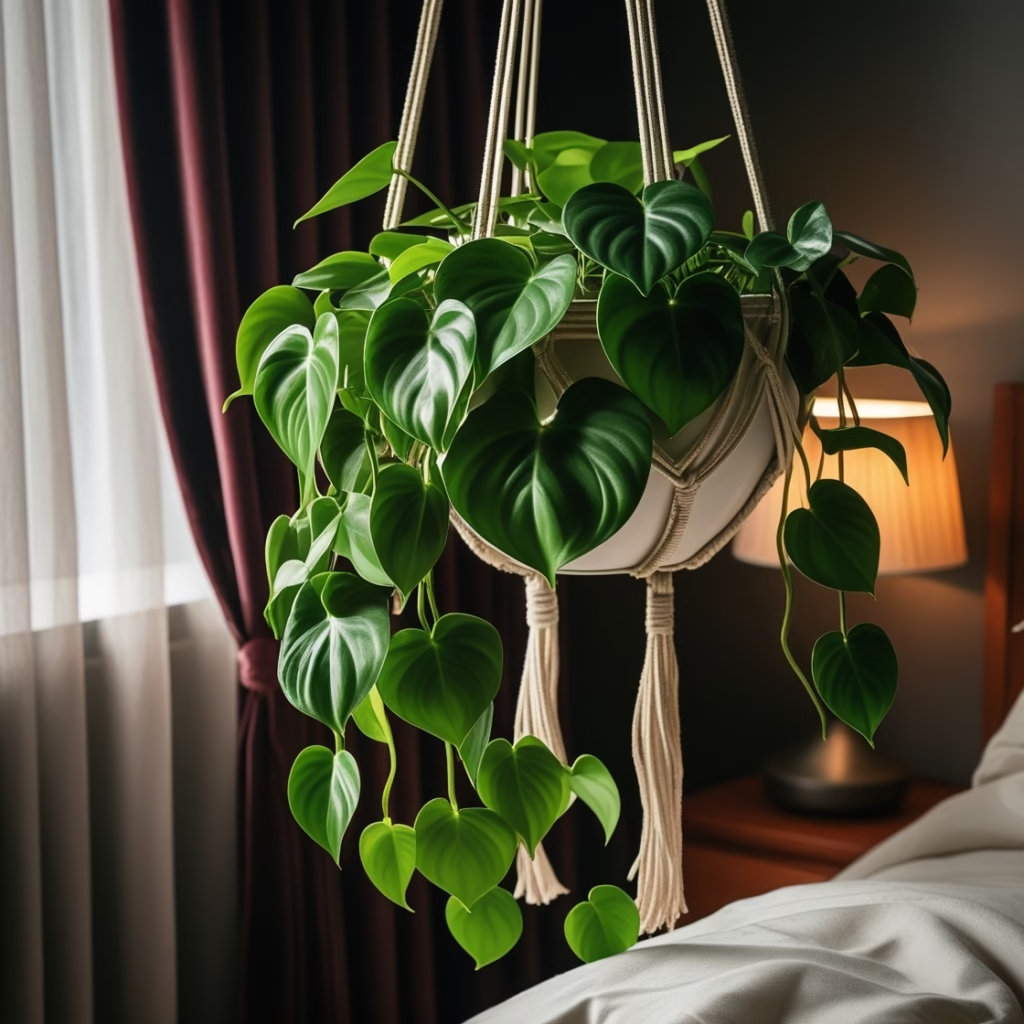
And now onto the heartleaf philodendron, a plant ready to sweep you off your feet even in the darkest of spaces. With its lush, heart-shaped leaves, this botanical cupid is perfect for creating an intimate atmosphere. When it comes to caring for this hopeful romantic, it isn’t just about candle-lit dinners and sweet serenades. When it comes to watering, give this green charmer a chance to miss you a bit. Allow it to dry out about 50 percent before watering and ensure proper drainage to prevent root rot. With these simple guidelines and a sprinkle of your affection, your heartleaf philodendron will blossom and continue to bring joy, beauty, and a touch of romance to even the darkest corners of your home.
What You Can Do With These Low-Light Indoor Plants
So let me guess: you know exactly which one you’re going to run to get. Maybe you’re going to get them all—I would! Here’s the thought before you do: read this article to get some tips on how you’re going to propagate them to give them to your friends and family. These low-light indoor plants don’t just survive—they thrive, transforming your dark spaces into vibrant, living corners. Pick your favorite, follow the care tips, and watch your home bloom with green magic!